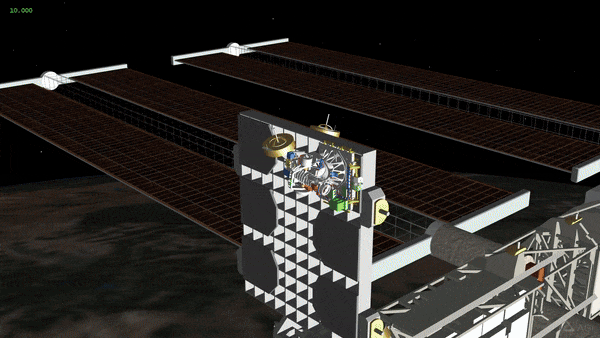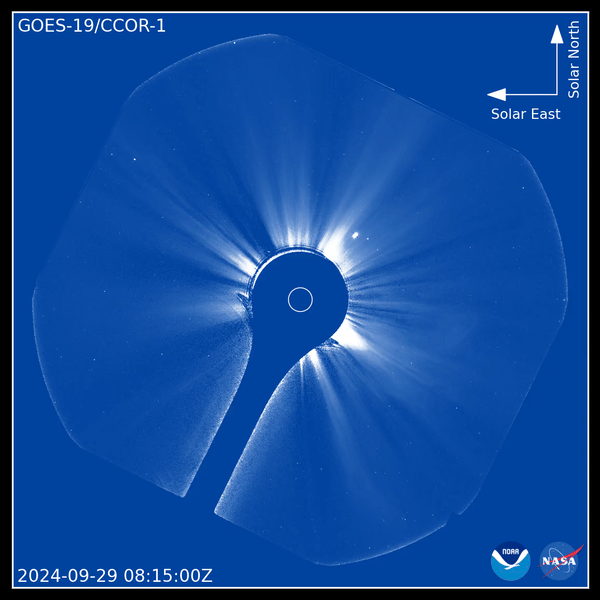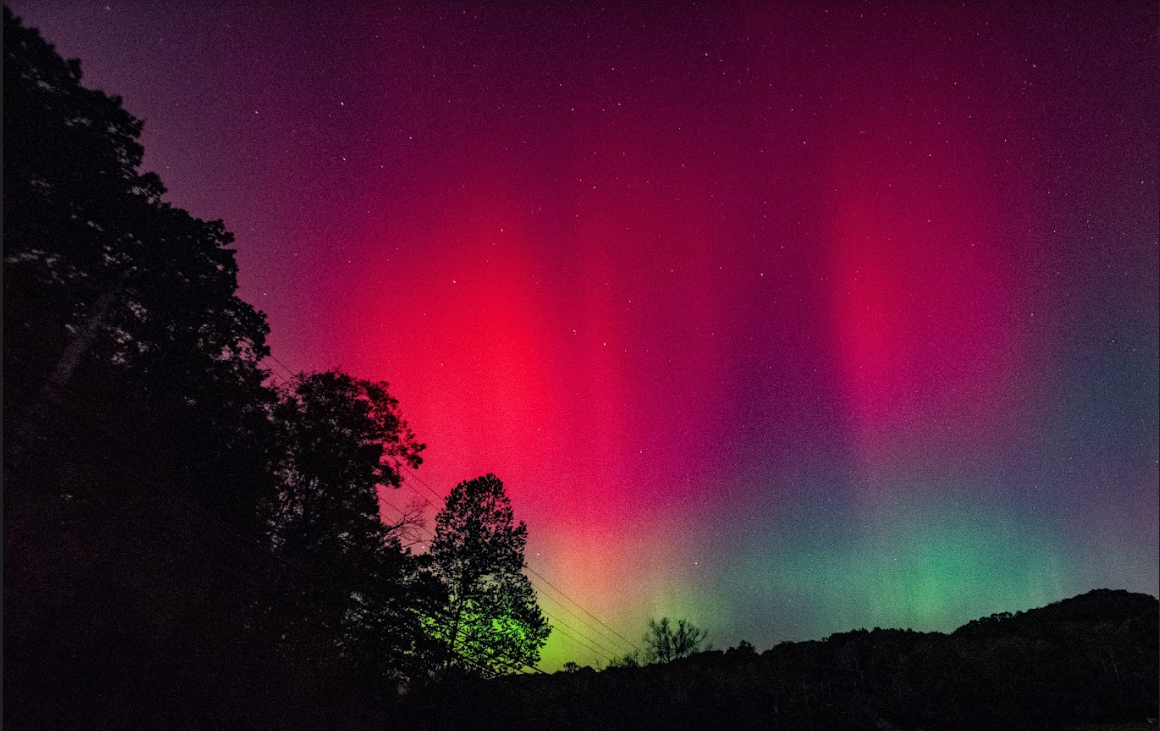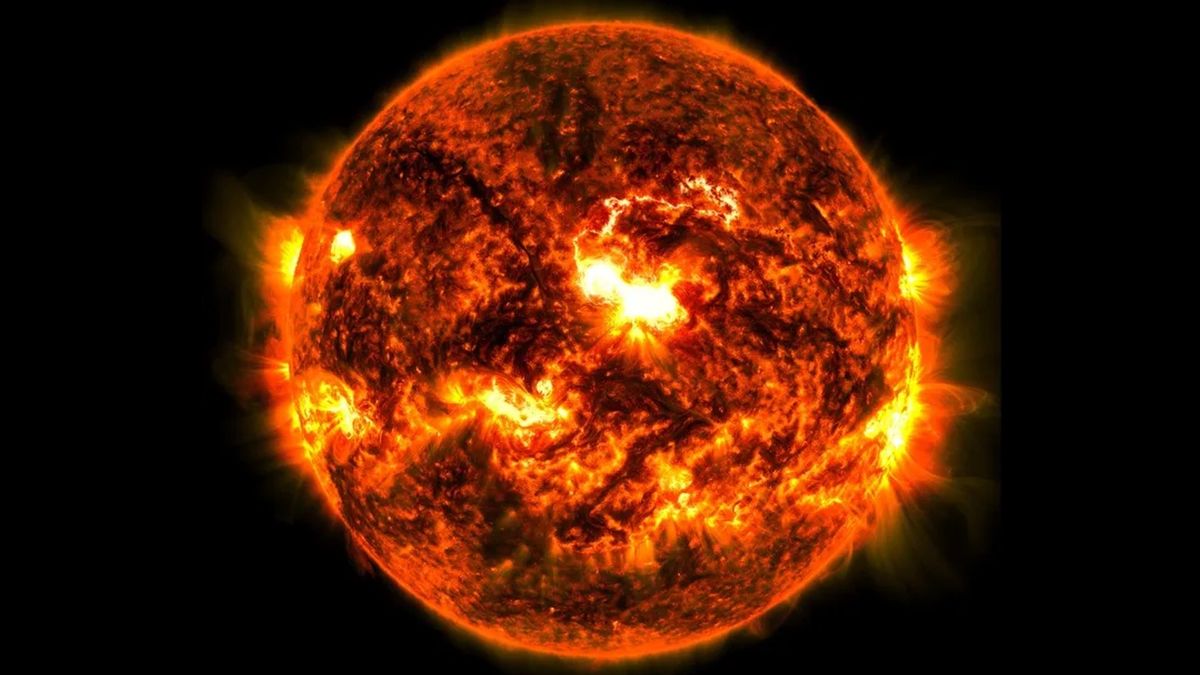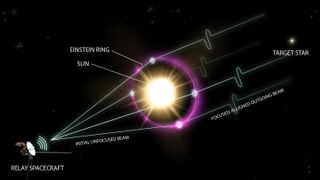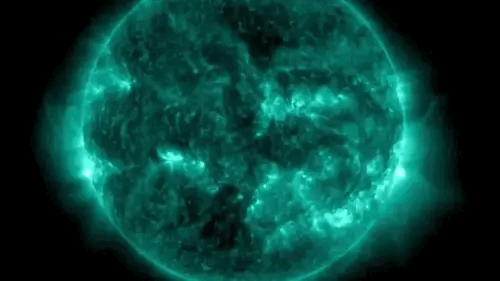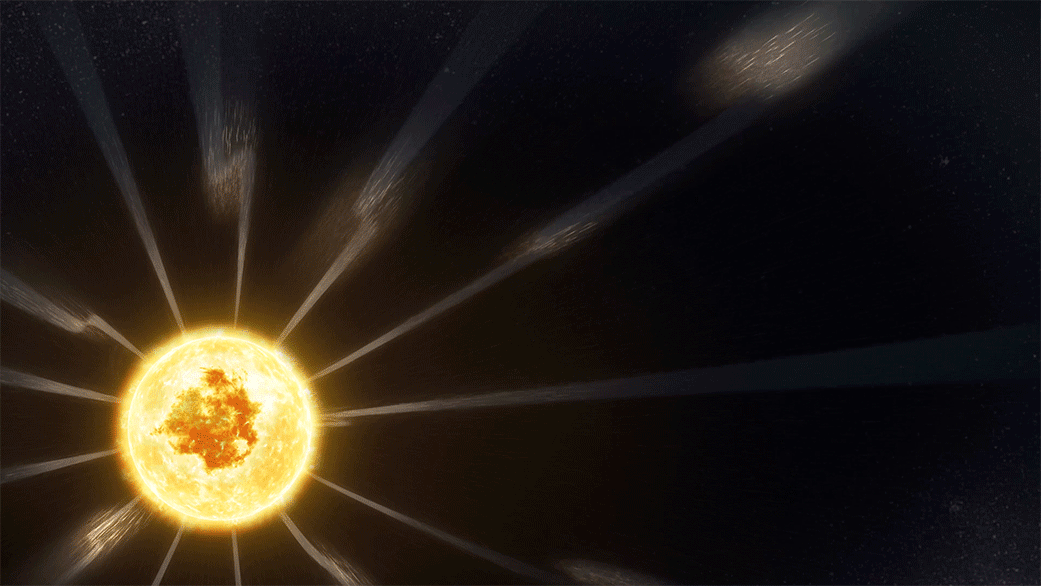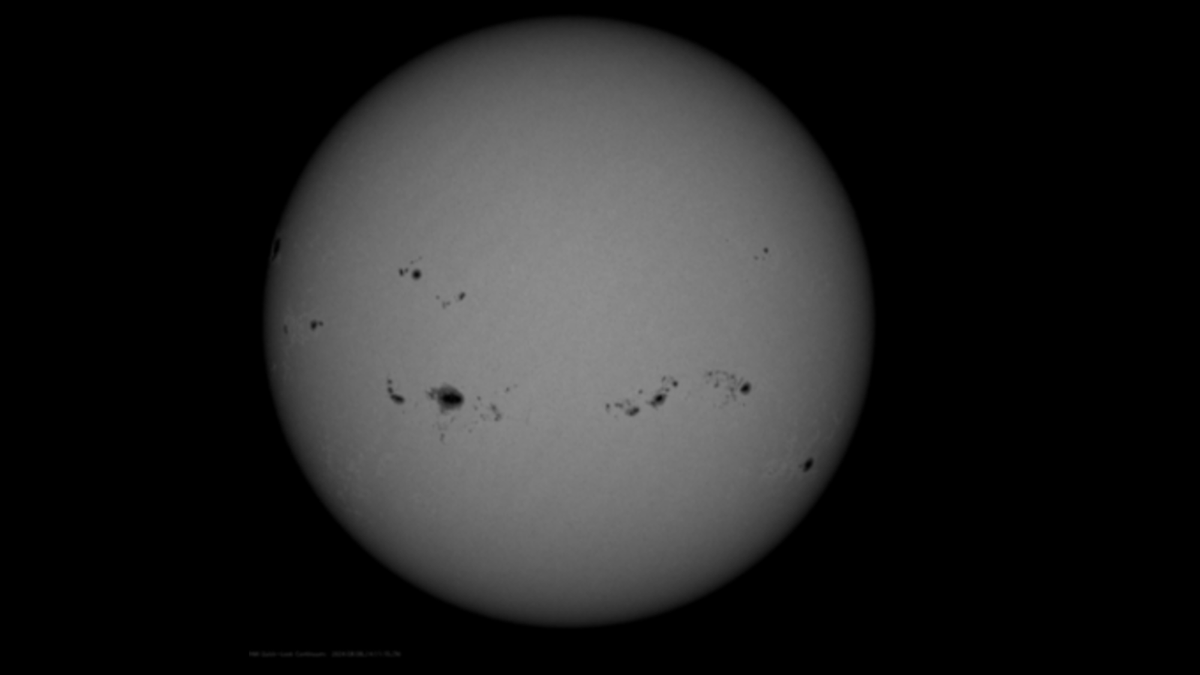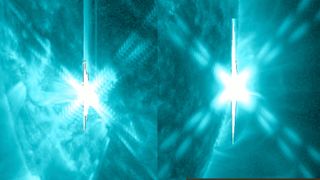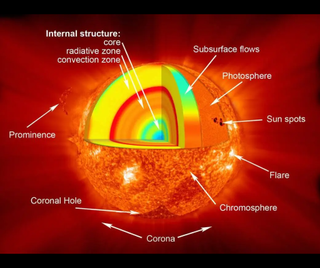5 min read NASA to Launch Innovative Solar Coronagraph to Space Station NASA’s Coronal Diagnostic Experiment (CODEX) is ready to launch to the International Space Station to reveal new details about the solar wind including its origin and its evolution. Launching in November 2024 aboard SpaceX’s 31st commercial resupply services mission, CODEX will be robotically installed on the exterior of the space station. As a solar coronagraph, CODEX will block out the bright light from the Sun’s surface to better see details in the Sun’s outer atmosphere, or corona. In…
Read MoreTag: The Sun
Watch sun erupt in 1st images from NOAA’s groundbreaking new satellite (photos)
The first images from a new space-based telescope launched into Earth’s orbit to monitor the sun captured a striking solar storm outburst. The National Oceanic and Atmospheric Administration (NOAA) shared the first images taken by its Compact Coronagraph (CCOR-1), the world’s first operational space-based coronagraph. CCOR-1 is mounted on NOAA’s newest geostationary satellite, GOES-19, which launched into orbit above Earth on June 25. CCOR-1 began its mission to observe the sun’s corona — the faint outermost layer of the solar atmosphere — on Sept. 19. The powerful solar telescope uses…
Read MoreSolar Cycle 25 is still in max phase, so more aurora-boosting sun storms could be coming
You could get more opportunities to see supercharged auroras over the next few months, thanks to our very active sun. Solar activity waxes and wanes on an 11-year cycle. The current cycle, known as Solar Cycle 25, began in December 2019 and is still in its maximum phase, experts say. “Currently, we’re about two years into the maximum period, so we’re anticipating another year or so of maximum phase before we really enter the declining phase, which will lead us back to solar minimum,” Lisa Upton, co-chair of the Solar…
Read MoreSevere solar storm could supercharge auroras across US, impact power grids, NOAA warns
Get ready, aurora chasers: There’s a good chance you’ll be able to catch a nice light show by the end of the week! Forecasters with the U.S. National Oceanic and Atmospheric Administration (NOAA)’s Space Weather Prediction Center (SWPC) are highlighting the potential for a severe geomagnetic storm on Thursday (Oct. 10) and Friday (Oct. 11). That storm is likely to be in the G4 class — the second-highest level on the SWPC’s geomagnetic storm scale, which takes into account both severity and potential impacts. Indeed, the SWPC has issued a…
Read MoreCould we turn the sun into a gigantic telescope?
We have some incredibly powerful telescopes that have given us spectacular views of the cosmos and allowed us to look back to the early days of the universe. These observatories, such as the James Webb Space Telescope (JWST), are amazing feats of engineering that have required billions of dollars and decades of work. But what if we could access an even better telescope that already exists? This wouldn’t be a typical telescope. It wouldn’t even come with a lens. But it would be by far the most powerful telescope we’d…
Read MoreSun fires off X-class solar flare, increasing aurora viewing chances into weekend
A parade of solar activity continues to flow from the sun this week, opening up more chances to spot the aurora across the United States this weekend. On Thursday morning (Sept. 12), a sunspot region that has not been numbered yet made its presence known blasting off a X1.3 class solar flare. X-class solar flares are the most powerful of their kind, and are typically followed by a full or partial loss of high frequency (HF) radio signals for sunlit locations on our planet. The energetic eruption, which peaked at…
Read MoreNASA, ESA Missions Help Scientists Uncover How Solar Wind Gets Energy
5 min read NASA, ESA Missions Help Scientists Uncover How Solar Wind Gets Energy Since the 1960s, astronomers have wondered how the Sun’s supersonic “solar wind,” a stream of energetic particles that flows out into the solar system, continues to receive energy once it leaves the Sun. Now, thanks to a lucky lineup of a NASA and an ESA (European Space Agency)/NASA spacecraft both currently studying the Sun, they may have discovered the answer — knowledge that is a crucial piece of the puzzle to help scientists better forecast solar…
Read MoreThe sun might’ve just had a record-breaking number of visible sunspots
On Aug. 8, scientists may have caught hundreds of individual sunspots on images produced by NASA’s Solar Dynamics Observatory (SDO). To us, sunspots might seem really tiny — but don’t be fooled. They are actually dark areas typically the size of the entire Earth on the sun’s surface. Plus, they exhibit strong magnetic fields that can fire off solar flares, which spew pulses of electromagnetic radiation into space. These are the explosions that lead to coronal mass ejections (CMEs) that can create solar storms on Earth. “The process of the…
Read MoreThe sun fires off 2 powerful X flares in less than 2 hours (video, photo)
The sun showcased its immense power yet again this morning (August 5), firing off not one but two X-class flares. X flares are the strongest solar flare class. Today’s first X blast, which launched from a sunspot called AR3767, reached its peak around 9:40 a.m. EDT (1340 GMT), clocking in at X1.7 on solar scientists’ flare scale. Then, less than two hours later, the sunspot AR3780 fired off an X1.1 class solar flare, which peaked at 11:27 a.m. EDT (1527 GMT). Solar flares are often accompanied by huge eruptions of solar…
Read MoreMagnetic fields on the sun could solve longstanding solar heating mystery
Scientists have long wondered why the hot soup of charged particles in our sun’s atmosphere gets hotter moving away from the surface of the sun. New research may have the answer, finding the super-hot nature of the sun’s outer atmosphere or “corona” could be due to the intriguing behavior of small-scale waves in this nebulous plasma. These waves, known to scientists as “kinetic Alfvén waves” or “KAWs,” are wave-like vibrations of magnetic fields manifested by motions in the sun’s photosphere. The findings could provide an important clue to decoding the…
Read More